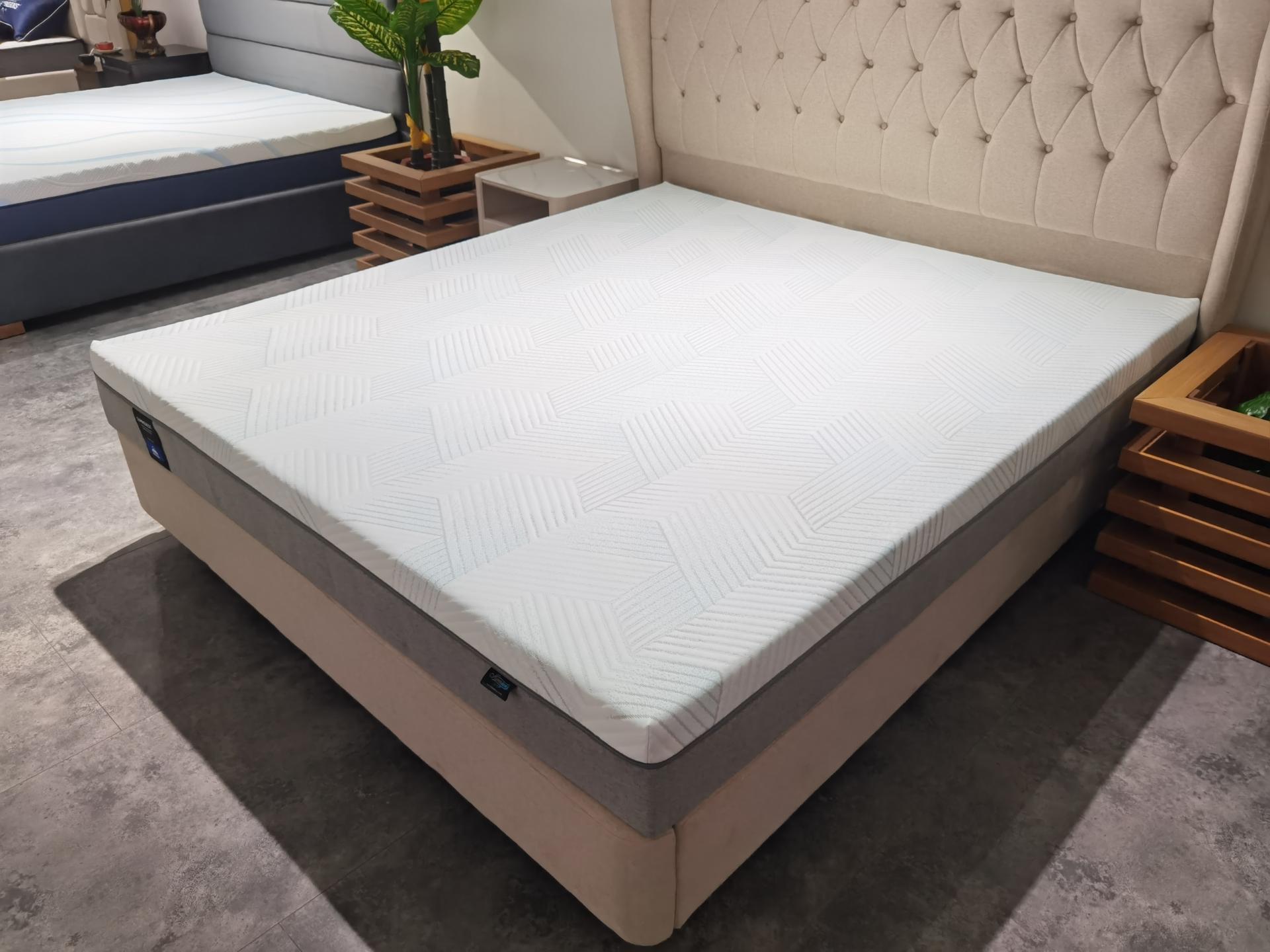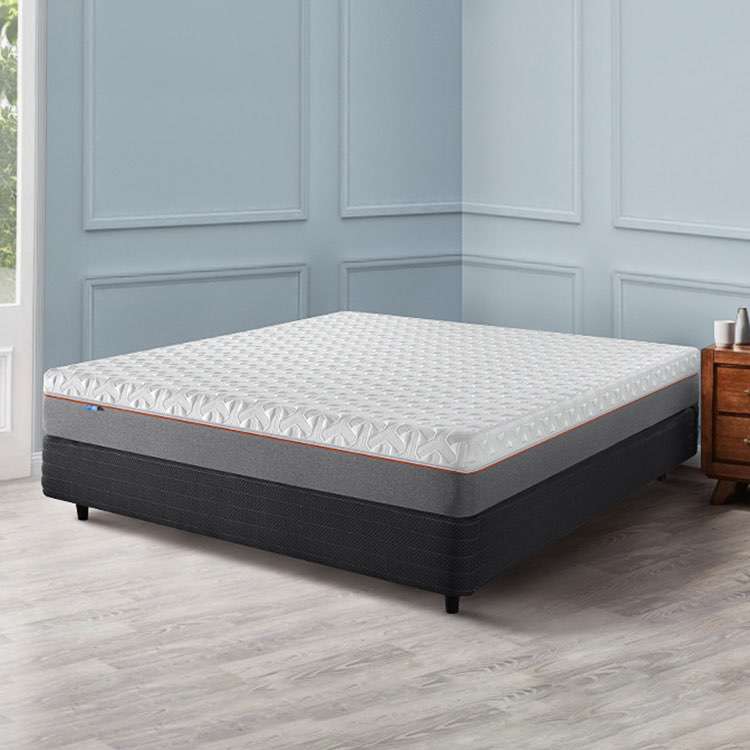Is a Sponge Bed Good?
 Foshan LEIZI Furniture Co., Ltd
Foshan LEIZI Furniture Co., Ltd  October 09,2024
October 09,2024
Choosing the right bed is crucial for ensuring a good night's sleep and maintaining overall health. With so many options available, it can be challenging to decide which type of bed will best meet your needs. One increasingly popular option is the sponge bed. But is a sponge bed good for you? Let's delve into the details to help you make an informed decision.
What is a Sponge Bed?
A sponge bed, often referred to as a foam bed, is crafted from a type of polyurethane foam. This material is known for its ability to conform to the shape of the body, providing personalized support and comfort. Unlike traditional spring beds, sponge beds do not have metal coils. Instead, they rely on the unique properties of foam to deliver a comfortable sleeping experience.
Sponge beds can vary in density and firmness, catering to different preferences and needs. The foam used in sponge beds is typically breathable and can be treated to enhance its hypoallergenic properties, making it a suitable choice for many sleepers. Additionally, sponge beds often include layers of different types of foam to provide both support and cushioning. This combination can help in distributing body weight evenly, reducing pressure points and improving overall sleep quality.
One significant advantage of sponge beds is their ability to adapt to various body shapes and sleeping positions. Whether you sleep on your back, side, or stomach, a sponge bed can provide the necessary support to keep your spine aligned and prevent discomfort. This adaptability makes sponge beds an excellent choice for individuals who experience pain or stiffness with other types of mattresses.
Advantages of Sponge Beds
One of the primary benefits of sponge beds is the level of comfort they provide. The foam material molds to the body's contours, offering support where it's needed most. This can be particularly beneficial for individuals with back or joint pain, as the bed helps to maintain proper spinal alignment and reduces pressure points. Sponge beds provide a unique sleeping experience due to their ability to distribute body weight evenly, which minimizes the chances of developing pressure sores or experiencing discomfort during the night.
Durability is another advantage of sponge beds. High-quality sponge beds can last for many years without sagging or losing their shape. This longevity makes them a cost-effective option in the long run. Unlike spring beds that may develop squeaks or lose their spring tension over time, sponge beds retain their supportive qualities, ensuring consistent comfort. This durability is particularly important for those who do not wish to replace their mattress frequently.
Health benefits are also a significant consideration. The supportive nature of sponge beds can improve sleep quality, leading to better overall health. By promoting proper alignment, sponge beds help prevent aches and pains, allowing for more restful sleep. Enhanced sleep quality can lead to improved mood, increased productivity, and better physical health. For individuals with conditions like arthritis or chronic back pain, a sponge bed can make a significant difference in their quality of life.
Temperature regulation is another notable feature. Sponge beds often have open-cell structures that allow for better air circulation, helping to dissipate heat and keep the bed cool. This is particularly advantageous for those who tend to sleep hot. Some sponge beds are also infused with cooling gel or other temperature-regulating materials to further enhance their cooling properties. This ensures that you can enjoy a comfortable sleep environment, regardless of the season.
Potential Drawbacks of Sponge Beds
Despite their many benefits, sponge beds do have some potential drawbacks. One common issue is the initial odor that can emanate from the foam, known as off-gassing. This smell typically dissipates within a few days but can be bothersome for some users. It is important to air out the bed in a well-ventilated room before use to minimize the impact of this initial odor.
Firmness levels can also be a point of contention. While sponge beds come in various firmness options, finding the right one can be a matter of personal preference. Some may find certain sponge beds too firm or too soft, affecting their sleep quality. It is essential to consider your sleeping position and any specific health concerns when selecting the firmness level. For instance, side sleepers may prefer a softer bed that provides cushioning for the shoulders and hips, while back sleepers might benefit from a firmer surface that supports spinal alignment.
The weight of sponge beds can be another disadvantage. These beds tend to be heavier than traditional spring mattresses, making them more challenging to move. This can be particularly problematic for those who need to reposition their bed frequently. The weight of the bed may also pose difficulties during cleaning and maintenance. It is advisable to have assistance when moving a sponge bed to avoid injury or damage to the mattress.
Maintenance is another consideration. Sponge beds require regular cleaning and care to maintain their condition. This includes rotating the bed to prevent uneven wear and vacuuming to remove dust and allergens. Some sponge beds come with removable and washable covers, which can simplify the cleaning process. However, it is important to follow the manufacturer's guidelines to ensure the longevity and hygiene of the bed.
Comparison with Other Bed Types
When comparing sponge beds to other types of beds, several differences stand out. Traditional spring beds, for example, often lack the contouring support provided by sponge beds. While spring beds can offer a bouncier feel, they may not be as effective in relieving pressure points. The metal coils in spring beds can also create uneven support over time, leading to discomfort and potential sleep disturbances.
Memory foam beds are another popular option. While they share some similarities with sponge beds, memory foam is typically denser and more temperature-sensitive. This can result in a more pronounced "hug" feel, which some people love and others may find restrictive. Memory foam beds are known for their slow response to pressure, which can make it difficult to move or change positions during the night. Sponge beds, on the other hand, tend to offer a quicker response time, making them more suitable for those who prefer a balance between support and mobility.
Latex beds are known for their natural materials and resilience. They offer a different kind of support, with a bit more bounce than sponge beds. However, they can be more expensive and heavier, which might be a consideration for some buyers. Latex beds also tend to have a firmer feel, which may not be suitable for everyone. Additionally, individuals with latex allergies should avoid this type of bed. Sponge beds provide a more versatile and accessible option for a wide range of sleepers.
Choosing the Right Sponge Bed
Selecting the right sponge bed involves considering several factors. Firmness is crucial, as it affects the overall comfort and support of the bed. Density is another important aspect; higher density foam generally offers better support and durability. It is essential to choose a bed that matches your preferred level of firmness and provides adequate support for your body type and sleeping position.
Personal preferences and health considerations should also play a role in your decision. If you have specific medical conditions, such as back pain or allergies, choosing a sponge bed that addresses these issues is essential. For example, hypoallergenic foam can help reduce allergic reactions, and beds with specific ergonomic designs can alleviate back pain. Consulting with a healthcare professional or a sleep specialist can provide valuable insights into the best type of bed for your needs.
When shopping for a sponge bed, it's advisable to test different options in-store if possible. Spending some time lying on the bed can give you a better sense of its comfort and support. Pay attention to how the bed feels in various sleeping positions and consider any specific requirements you may have. Online reviews and recommendations can also be helpful in narrowing down your choices. Look for reputable brands that offer trial periods or satisfaction guarantees, so you can return the bed if it doesn't meet your expectations.
In conclusion, sponge beds offer a range of benefits, including comfort, support, and durability. While they do have some potential drawbacks, such as initial odor and weight, these can often be mitigated with proper care and selection. Overall, a sponge bed can be an excellent choice for those seeking improved sleep quality and health benefits. By addressing specific sleep needs and preferences, sponge beds can provide a customized and comfortable sleeping experience.
We invite you to explore our range of sponge beds to find the perfect fit for your needs. Visit our website or contact us for more information and personalized recommendations. Experience the comfort and support of a sponge bed and enjoy better sleep every night. Whether you are looking for a bed that alleviates pain, enhances comfort, or offers longevity, our selection of sponge beds has something for everyone. Don’t miss the opportunity to transform your sleep experience with a high-quality sponge bed designed to meet your unique needs.













